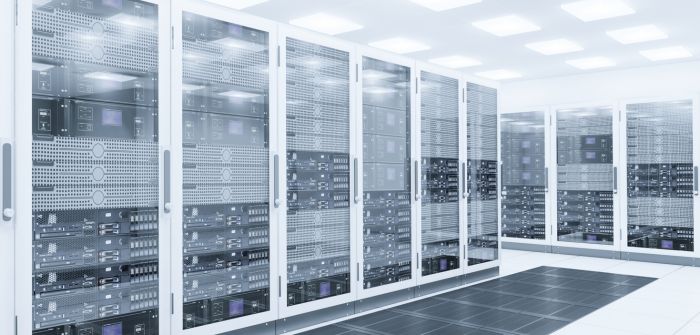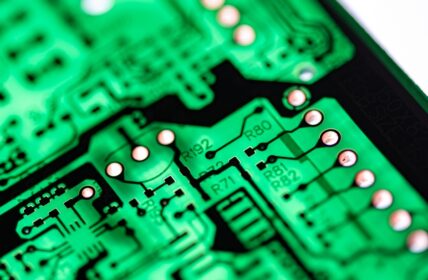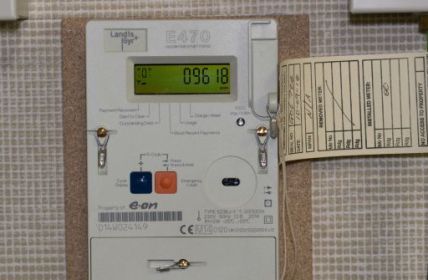The data centre houses the technical infrastructure necessary for a company or economic unit. It is of central importance for data processing in the company and must be well maintained.
Table of Contents: What awaits you in this article
Die Aufgaben und Verpflichtungen der Betreiber eines Rechenzentrums
In the early days of digitisation, data centres were primarily assigned to large administrative units such as the financial administration. Research institutions, universities, banks and insurance companies also had their own data centres where large amounts of data were processed and stored.
Today, it is also large companies from industry and commerce that have their own data centres. The necessary infrastructure is provided there in order to be able to work without any downtime. For this purpose, the machines, devices and systems in the data centre are usually multiple and equipped with high-performance technology for cooling, among other things.
These are the tasks data centres have today
Various servers are available in the data centre, with more equipment being used here than would theoretically be necessary. This is to ensure that operations can continue as planned if individual servers fail. Air conditioning units provide cooling for the servers, which emit large amounts of heat.
Individual devices can be cleaned and maintained even when the data centre is in operation because several servers perform the same tasks. A similar procedure is used for the power supply. Modern servers have two power supply units, each of which can supply the entire server. This means that there is no need to worry about downtime during maintenance.
In a modern data centre, the amount of equipment used thus ensures that downtimes do not occur at all or only to a minimal extent and then also in a planned manner.
Mandatory cleaning in the data centre
Data centre operators have a duty to ensure that they function smoothly. However, this is not only made difficult by technical challenges, but also by the amount of dirt. Even if laymen do not suspect it: It’s dusty in a server room! The reason for this are the electrons, which turn out to be real dust magnets.
Dust accumulates especially where servers are cooled with fans. The waste heat accumulates under the dust, resulting in an enormous increase in energy consumption on the one hand and possible failures due to overheating on the other. Experts assume that the failure rate of electronic components doubles as soon as the operating temperature in the server room increases by 10 °C.
Heat-sensitive components give up quickly. It is therefore important to ensure professional data centre cleaning during operation. This, in turn, requires professionals who have both technical knowledge and the necessary intuition to avoid damaging the sensitive components in the server room. Frequent activities in the cleaning of data centres are, for example, these:
- Dismantling raised floor panels and equipment to be cleaned
- work with HEPA/ULPA hoovers
- Cleaning rotor blades
- Wiping out and vacuuming server cabinets
- antistatic treatment of surfaces
- Chemical treatment of zinc-containing metal alloys to prevent zinc hairline cracking.
- Visual inspection for damage to individual components
DIN EN ISO 14644-1 is considered the standard that is decisive for the cleaning of a data centre. It is primarily concerned with the particle purity class of the air and the highest possible number of airborne particles. Other applicable standards are VDI 2083-3 and the EU GMP guidelines. The specifications and standards state that regular and professional cleaning of a data centre must be carried out; contamination must be removed immediately. This is a requirement and not a recommendation!
This means that spring cleaning in the data centre is not a voluntary matter, but must be carried out. Above all, critical soiling must be removed directly, using innovative techniques and procedures that have proven to be effective.
The importance of data centres
The fact that it is no longer possible without data centres is clear even to laymen. The huge amounts of data that are collected about every single citizen have to be stored and maintained somewhere. Companies also manage their product and business data not on individual computers in their offices, but collected in a data centre.
These centres are thus indispensable for digitalisation and have a significant share in the economic development of the country. The demand for digital applications is constantly growing, which is also being pushed by higher-level authorities.
No economy without data centres
The importance of data centres is increasing for every company. The public sector is also increasingly relying on the digitalisation of business and administrative processes. Likewise, the importance of cloud use and Big Data is increasing worldwide. Expenditure in this area fluctuates, as infrastructure and hardware are associated with high costs when purchased and set up.
Companies that have made these expenditures do not need new facilities of this kind in the period thereafter. It is also noticeable that many investments were postponed due to the worldwide pandemic, and experts expect catch-up effects in the coming years. For example, they expect turnover in the data centre market in 2023 to be around 15.61 billion euros, with network infrastructure being the fastest-growing segment this year. The annual growth rate is expected to reach 3.51 per cent, with most of the revenue expected in the USA.
(Quelle: https://de.statista.com/outlook/tmo/rechenzentren/deutschland#umsatz)
High electricity costs, however, could ensure that investments in Germany in particular are less than expected and that Germany will continue to lag behind Scandinavia and the Netherlands. Especially in terms of ancillary electricity costs, which include taxes, levies and grid charges, data centres in Germany are the furthest ahead. In no other European country are these costs as high, which is mainly due to the EEG levy. As a solution, data centre capacities are increasingly being relocated abroad.
How secure are data centres?
On the one hand, it is a fact that new data centres are constantly being built. On the other hand, the question arises whether the necessary security for these data centres can be guaranteed at all. It is clear that the security requirements vary depending on the administrative environment of the centre. In most cases, entry control is used, and most data centres also have alarm systems.
Some of them are EMP-protected, some are housed in underground bunkers. There, they are protected against heat, pressure waves and ionising radiation. Fire protection is given special priority. Extinguishing systems are designed to minimise hardware damage. Mostly halons are used as extinguishing agents, since water or powder foam can cause more damage than contaminated cables.
Halons rely on the displacement of oxygen, which is possible with the help of argon or nitrogen. Short circuits are thus avoided, and it is also possible to limit the gas effect to individual rooms and to certain values. Important: A pressure relief valve is necessary when extinguishing gases are used because otherwise overpressure occurs.
Fire detectors are indispensable for safety in the data centre, because it is important to detect a fire as quickly as possible. Only then can the damage be kept to a minimum. However, conventional fire detectors are problematic due to the use of cooling systems and warm air cushions in the server room. Highly sensitive smoke aspiration systems are thus the better solution.
The cleaning of the data centres already described above is also an important safety measure. Dust deposits caused by turbulence during ventilation or construction work have abrasive properties and can damage moving parts in the data centre. It also prevents components from emitting heat, which can result in overheating and fire.
The risk of short circuits on the assemblies also increases enormously if overheated components increase the electrical conductivity of the components. Leading manufacturers of server technology now require compliance with standards such as the ISO 14644-1 described. If the corresponding measures are not proven, the warranty on installed components or entire devices can be voided. Almost all server manufacturers now follow this path, wanting to be on the safe side.






